Art & Exhibitions
10 Fun Facts About the Whitney Museum
Did you know that Duke Ellington played a concert in the Breuer Building?
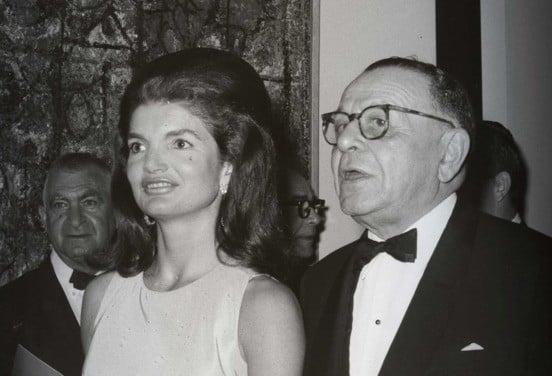
Did you know that Duke Ellington played a concert in the Breuer Building?

Cait Munro

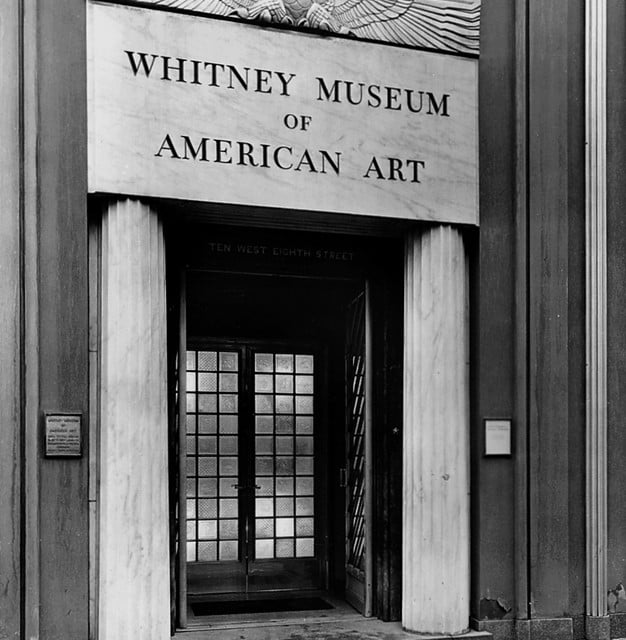
The Whitney’s original location at 945 Madison Avenue.
Photo: NY-Architecture via Untapped Cities.
The hotly anticipated new Whitney Museum of American Art doesn’t officially open to the public until May 1, but with the slew of VIP previews, receptions, and events going down over the coming week (see Whitney Museum’s Inaugural Show in New Home Spans John Sloan to Yayoi Kusama and Jeff Koons), the Renzo Piano-designed space in the Meatpacking District is about to be on the tip of everyone’s tongue. To celebrate, we’ve got ten fun facts that will change the way you see the institution (see Does the New Whitney Museum Herald a Golden Age for New York Institutions?).
1. It was born out of rejection.
It’s not the least-known fact about the American art museum, but it is perhaps the most inspiring: founder Gertrude Vanderbilt Whitney was moved to create the institution after the Met refused a gift of nearly 700 works she attempted to donate. Keep that in mind next time someone sends a “no” in your direction.
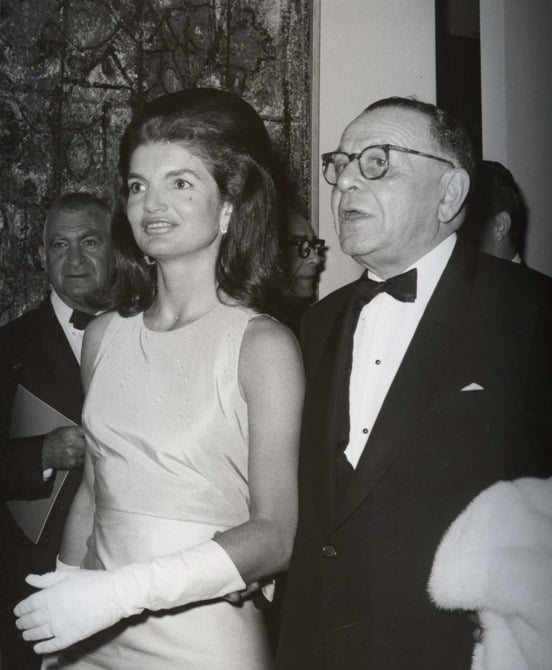
Photo: Bernard Gotfryd/Courtesy of the Whitney Museum of American Art.
2. Jackie O attended the Breuer building’s opening.
Back in 1966, when the museum christened the Breuer building, Jackie O (and a host of other ’60s-era socialites) showed up to the ribbon cutting and subsequent party, looking fabulous in a pair of white elbow-length gloves. We’ll take this to mean we can expect some equally impressive celebrity sightings at one of the upcoming preview parties.
3. If you’re an artist featured in the museum’s permanent collection, you get a lifetime membership.
The Whitney likes to treat their artists right. If you have a piece in the collection, you’ll never pay a dime to access the museum for the rest of your life. You know, just in case being included in the collection of a major museum wasn’t exciting enough. (See Whitney Hikes Entry Fees, Sells Advance Tickets to New Home.)
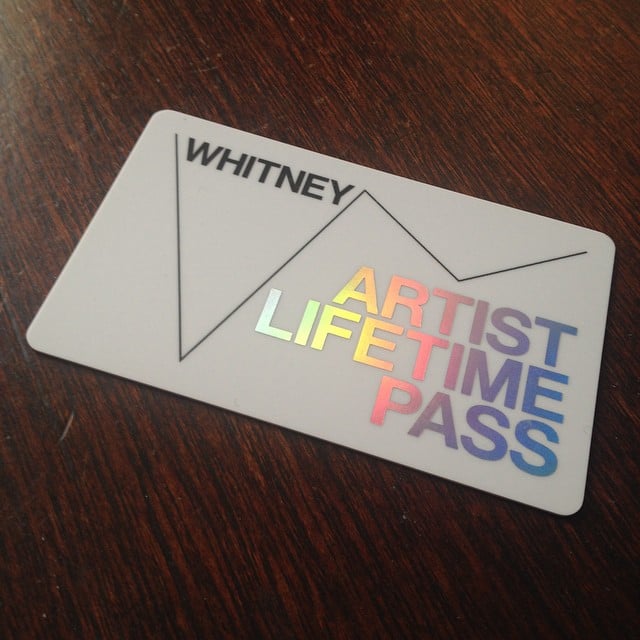
A Whitney Museum artist lifetime pass.
Photo: Courtesy the Whitney Museum of American Art.
4. The Whitney Biennial started as an “alternative” kind of art show.
These days, the Whitney Biennial is known for catching flak from critics for being too white, too male, or just not up to expectations. But back in 1932, it was begun as an alternative to stuffy museum exhibitions curated by academics. The show aimed to survey some of the more radical means of visual expression happening in the country, and the idea was to have no juries and no prizes. Artists were even allowed to select their own work for inclusion in the show.
5. The Breuer building was initially disliked.
It’s revered as a New York City staple now, but in 1966, there were more than a few critics of Brutalist concrete structure. New York Times architecture critic Ada Louise Huxtable, despite appreciating the building herself, acknowledged in a column that it was probably “the most disliked building in New York.”
6. Bob Dylan and his rock star friends have all partied at the museum.
It isn’t just Jackie O who has graced the institution with her presence. In 1985, Columbia Records threw a wild affair at the Breuer for Bob Dylan, featuring large video screens with images of the rocker throughout the years. Who else showed up? Oh, just Lou Reed, Iggy Pop, David Bowie, Martin Scorsese, Robert De Niro, and Yoko Ono. You know. No big deal.
7. Gertrude Vanderbilt Whitney was involved with the 1913 Armory Show.
Whitney helped subsidize the legendary 1913 Armory Show, where Marcel Duchamp’s pivotal canvas Nude Descending a Staircase was lampooned as “an explosion in a shingle factory,” but reportedly did not actually attend it herself.
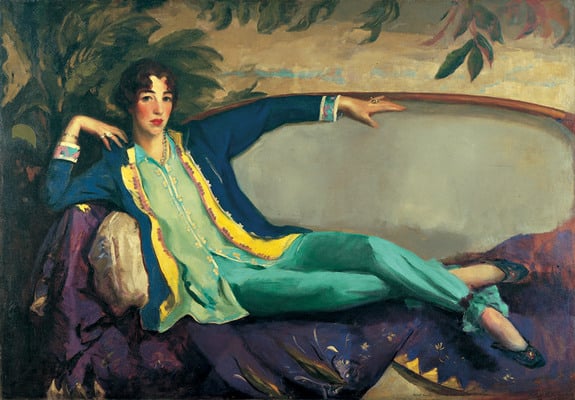
Robert Henri, Gertrude Vanderbilt Whitney (1916).
Photo: Courtesy the Whitney Museum of American Art.
8. The museum was sued over a James Turrell show—twice.
The 1980 show ”James Turrell: Light and Space” precipitated lawsuits against the museum from two separate groups of museumgoers who claimed that the light works cause them to become “disoriented and confused.” One woman even claimed she strained her wrist. Turrell was forced to spend $30,000 to defend himself after the museum’s insurance company attempted to place the full blame on him.
9. The Whitney used to have branches.
In the early days, the museum established corporate-funded branches in downtown Manhattan, the Equitable Center on Seventh Avenue and 52nd Street, Park Avenue and 42nd Street at the headquarters of Philip Morris (later Altria), and in Stamford, Connecticut—all of which were eventually shuttered.
10. Duke Ellington played a concert and recorded an album there.
In 1972, jazz icon Duke Ellington staged a concert at the museum, and recorded the acclaimed album “Live at the Whitney.” The event occurred just a few before Ellington’s 73rd birthday.
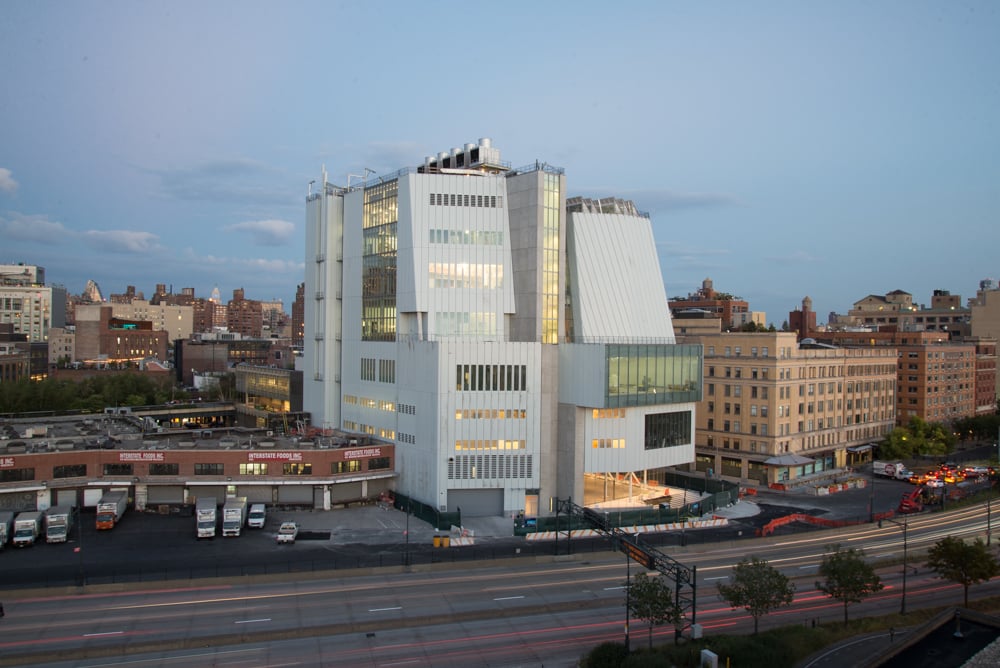
The Whitney’s new location.
Photo: Courtesy the Whitney Museum of American Art.
The Whitney Museum of American Art reopens to the public at 99 Gansevoort Street on May 1 with the exhibition “America Is Hard To See,” on display until September 27, 2015.